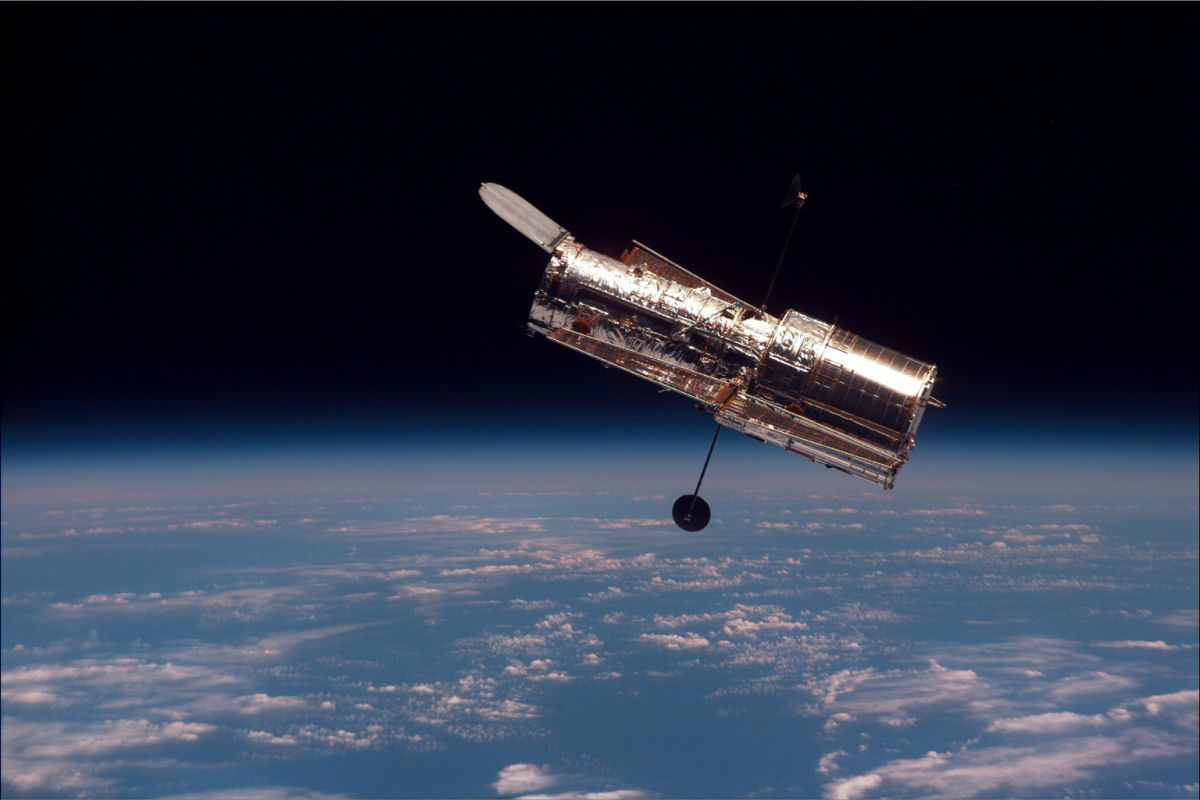As NASA moves forward with its latest rover on Mars, a new film is looking back at the agency’s past “opportunity” to explore the Red Planet. “Good Night Oppy,” an upcoming feature-length documentary produced by Amazon Studios, Film 45, Amblin Television and Tripod Media, will tell the story of Opportunity, one of NASA’s twin Mars Exploration Rovers, and the connection that grew between the robotic explorer and the people who built and ran it. Ryan White (“The Case Against 8,” “Assassins”) is directing the film, now in production. “I grew…
Read MoreMonth: March 2021
Hubble Space Telescope in safe mode after software glitch
NASA’s Hubble Space Telescope is taking an unexpected break. The iconic observatory went into a protective “safe mode” early Sunday morning (March 7), but its handlers seem confident it will bounce back in relatively short order. “At ~4:00 a.m. EST [0900 GMT] on Sunday, the Hubble Space Telescope went into safe mode due to an onboard software error. All science systems appear normal and Hubble is safe and stable. The team is working plans to safely return it to normal science operations,” Hubble team members announced Sunday evening via the…
Read MoreWhat — and Where — Is the North Polar Spur?
Astronomers make the case that a gigantic ridge of gas sticking out of the galactic plane was blown out by a cluster of nearby supernovae. The post What — and Where — Is the North Polar Spur? appeared first on Sky & Telescope.
Read MoreArecibo Observatory telescope cleanup could cost up to $50 million, NSF reports
Cleaning up the collapsed radio telescope at the iconic Arecibo Observatory in Puerto Rico could cost between $30 million and $50 million, according to the National Science Foundation (NSF). The cost estimate, revealed Friday (March 5), is laid out in an NSF report required by Congress after the giant radio telescope’s hanging science platform crashed down through the 1,000-foot (305 meters) dish on Dec. 1. Two supporting cables had snapped on the telescope in the months before the collapse. The crash came less than two weeks after the NSF had…
Read MoreElectrical Engineer and NASA Astronaut Joan Higginbotham
At NASA, women – be they scientists, pilots, astronauts and others – help the Agency fulfill its mission. Joan Higginbotham is one of those women.
Read MoreOn This Day in Space! March 7, 1962: NASA launches Orbiting Solar Observatory
On March 7, 1962, NASA launched the first Orbiting Solar Observatory. Eight of these satellites were launched between 1962 and 1975 to study the 11-year solar cycle. Each of the satellites had two main parts called the “wheel” and the “sail.” The sail contained solar panels and instruments that took measurements of the sun. The sail was mounted onto the wheel, which could rotate to make sure that the instruments were pointing in the right direction. The satellites measured things like UV light, X-rays, and gamma radiation. The data was…
Read More‘Gravity portals’ could morph dark matter into ordinary matter, astrophysicists propose
Astrophysicists have an idea that could help to solve two mysteries: the reason for the bizarre abundance of super-high-energy radiation shooting from the center of our galaxy and the identity of invisible stuff called dark matter that has perplexed the world since its discovery some 50 years ago. And the idea has a super-cool name: gravity portals. The idea goes, when two dark matter particles (whatever they are) get sucked into one of these portals, they obliterate each other and spit out shockingly strong gamma rays. This line of thinking…
Read MoreA billion years from now, a lack of oxygen will wipe out life on Earth
This article was originally published at The Conversation. The publication contributed the article to Space.com’s Expert Voices: Op-Ed & Insights. Matthew Warke, Research Fellow, School of Earth & Environmental Sciences, University of St Andrews Earth will not be able to support and sustain life forever. Our oxygen-rich atmosphere may only last another billion years, according to a new study in Nature Geoscience. As our Sun ages, it is becoming more luminous, meaning that in the future Earth will receive more solar energy. This increased energy will affect the surface of the planet, speeding up…
Read MorePerseverance’s Fortnight of Firsts on Mars
NASA’s Perseverance rover sends back postcards aplenty following its arrival on Mars as it prepares to explore Jezero Crater. The post Perseverance's Fortnight of Firsts on Mars appeared first on Sky & Telescope.
Read MoreIn the Space.com forums this week: Perseverance prizes, exploration and breaking theories!
This week, we kick off our Perseverance Prize giveaway. Celebrating space exploration even further, we talk about the next frontiers we’d like to see explored. Finally, community members take on a mind-bending theory about alternate universes! If you haven’t already, make sure to register for the Space.com forums and join a community of like minded space enthusiasts! You’ll be able to join our launch watch parties and be the first to know about upcoming giveaways, AMAs and more! Our Perseverance Giveaway! We’re giving away two prizes — this Mars 2020…
Read More


